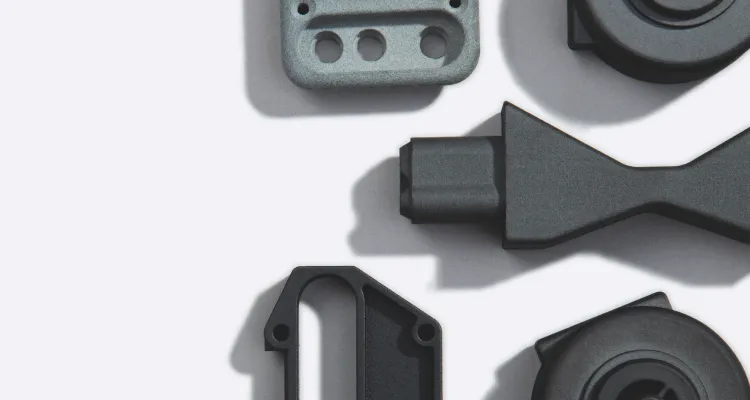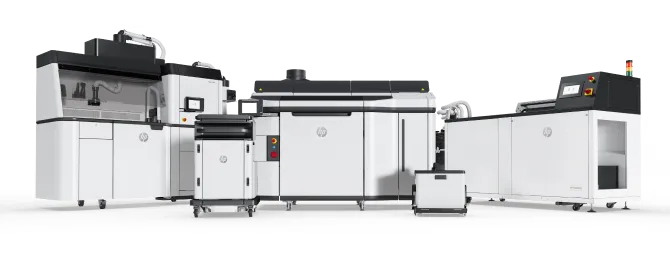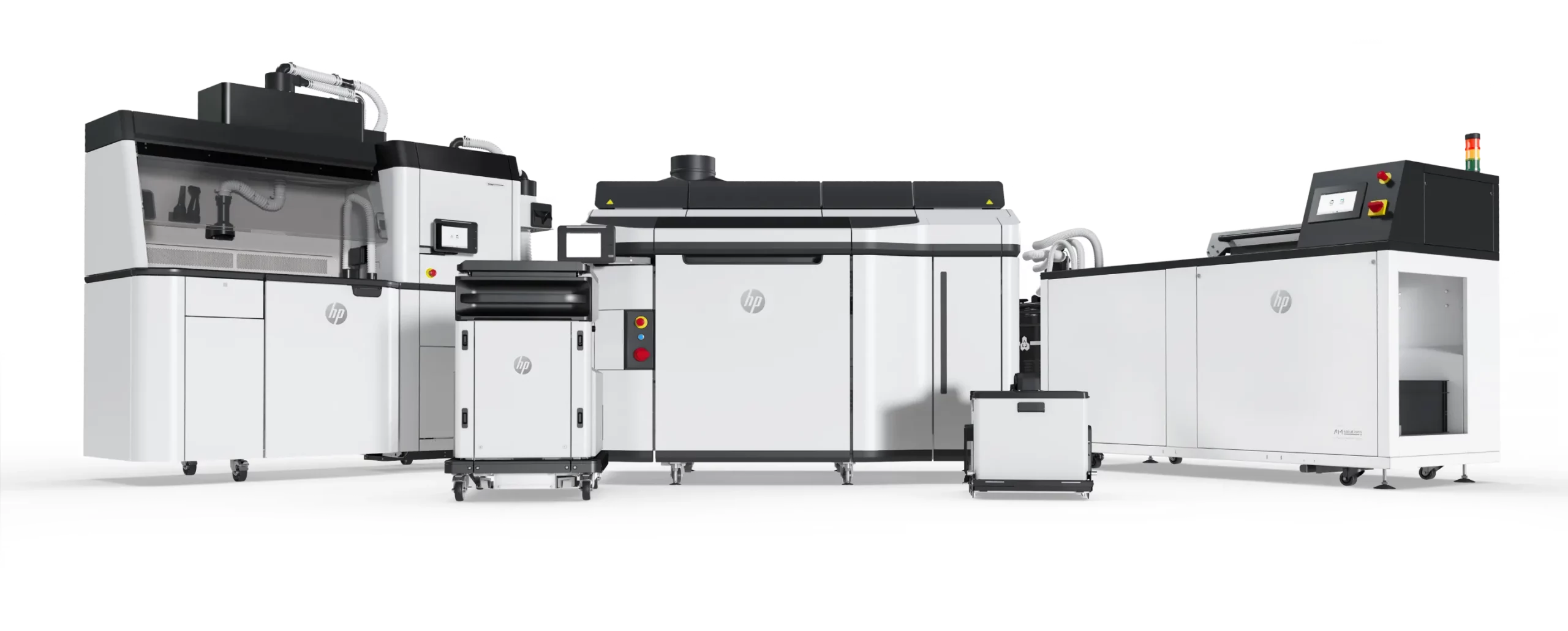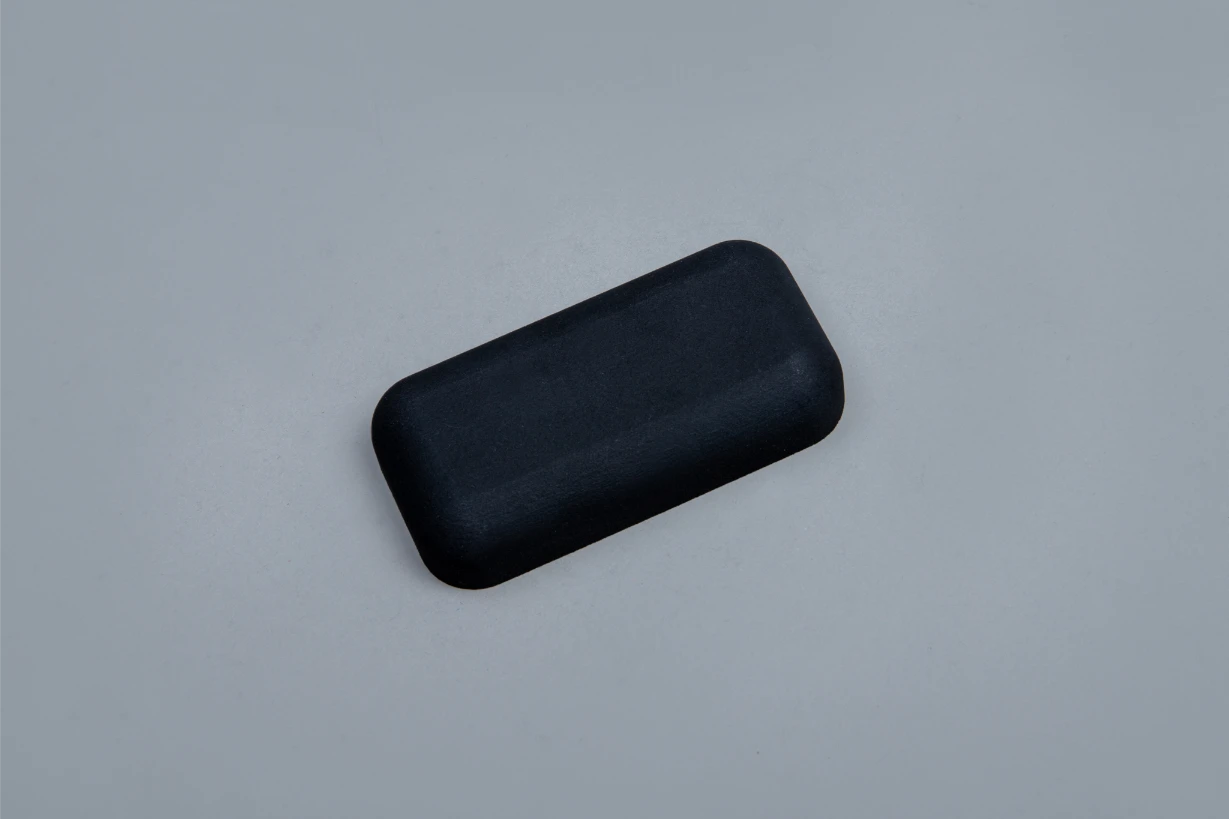HP Multi Jet Fusion technology
HP Multi Jet Fusion technology is an innovative 3D printing method that allows rapid and accurate manufacturing of durable parts with excellent surface finish.
It is experiencing rapid global expansion and increasingly preferred by businesses as a substitute for injection moulding.

Advantages of the technology
Why is Multi Jet Fusion chosen by numerous companies?
Industrial durability
Consistent dimensions
Enhanced productivity
Complex
designs
Cost-effectiveness
Versatile applications
Smooth surface
A global leader


Multi Jet Fusion's operating principle
See how HP technology works
By utilising polymer powder and an exceptional printing technique, Multi Jet Fusion enables us to attain micron-level precision and reduce production time by a factor of ten compared to conventional methods.
See what your parts can look like
Finishes for the Multi Jet Fusion
Sanding without graphite
Parts after printing are only sanded with glass beads. The parts are in their natural color in which they were printed.
Light gray, matte
Polyshot
Additional finishing cost +30%
The parts are sanded without graphite, then dip-dyed black and sandblasted once more with a special medium that imparts a shine.
- Scratch-resistant surface
Black, semi-matte
Vaporfuse (chemical processing)
Additional finishing cost +50%
The parts are sanded without graphite, then dip dyed black. The final gloss is obtained by placing the parts in a chamber with solvent fumes, which overmelt the surfaces.
- Scratch-resistant surface
- Closed surface
- Better mechanical properties
Black, glossy
From the idea to the final product in just 3 days
7 steps to 3D printing
Make an appointment for a free online consultation
- After submitting the form, we will contact you to schedule an appointment.

- Application of 3D printing in your project
- Talking to an engineer
- Possibility to order sample prints
Applications
Examples of 3D printing applications
Witness the utilisation of 3D printing by diverse factories and companies in the production of novel devices and even prostheses.
3D Design / Factories / Short-Run Production
3D Design / Factories / Short-Run Production
3D Design / Contract Manufacturing / Device Manufacturing / Enclosures
3D Design / Contract Manufacturing / Implementation Advisory / Startups
3D Design / Contract Manufacturing / Factories / Implementation Advisory / Production Parts
3D Design / Custom Products / Short-Run Production
Technical
specification
Multi Jet Fusion
Standard lead time
3-5 days
Dimensional accuracy
+/-0.3mm ≤ 100mm
+/-0.3% >100mm
Layer thickness
80 microns
Minimum wall thickness
1 mm
Maximum build dimensions
380 x 284 x 380 mm
The material used in printing
Poliamid PA12
Part density
1.01 g/cm3
standard ASTM D792
Tensile strength - XY
48 MPa/6960 psi
standard ASTM D638
Tensile strength - Z
48 MPa/6960 psi
standard ASTM D638
Tensile modulus - XY
1700 MPa/245 ksi
standard ASTM D638
Tensile modulus - Z
1800 MPa/260 ksi
standard ASTM D638
Elongation at break - XY
20%
standard ASTM D638
Elongation at break - Z
15%
standard ASTM D638
Heat deflection temperature 1
Heat deflection temperature 2
175°C
95°C
standard ASTM D648
@ 0.45 MPa
@ 1.82 MPa
FAQ
Our experts provide insights and answers to common questions regarding HP's Multi Jet Fusion (MJF) technology, recognized as the fastest-growing additive manufacturing method globally.

Newsletter - Discover the potential of 3D printing












